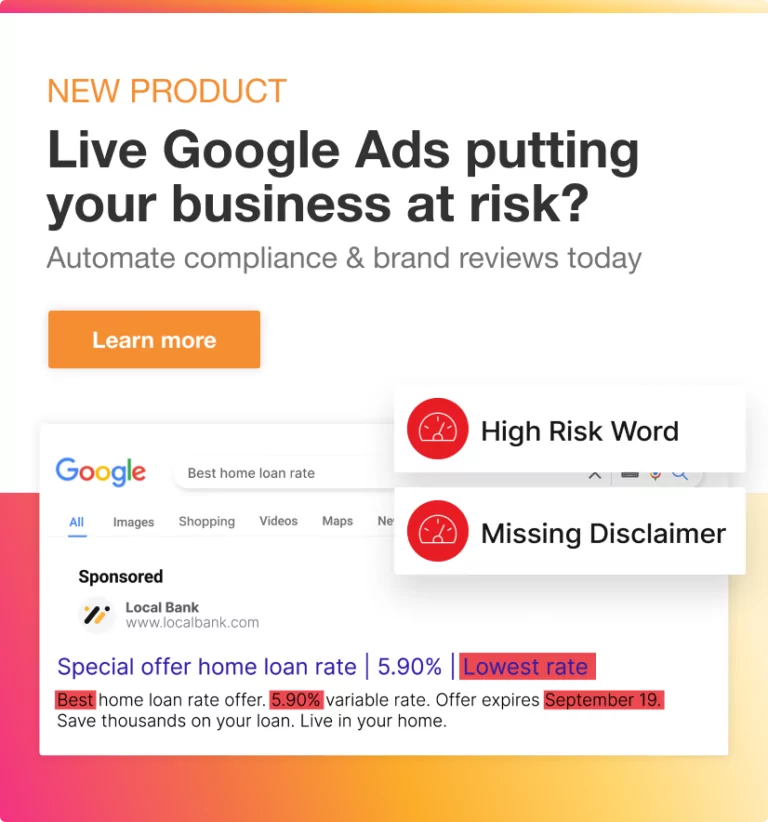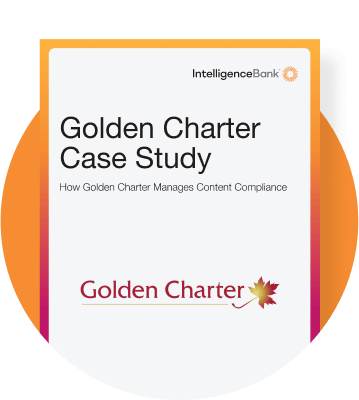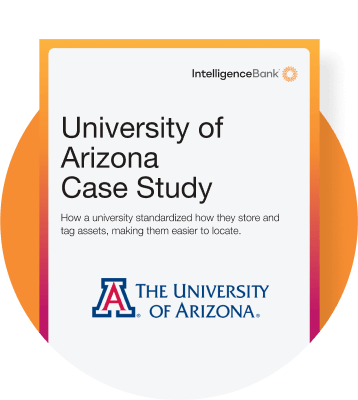To non-technical types, words like automation, artificial intelligence (AI), machine learning (ML), and natural language processing (NLP) are often used interchangeably. Yet there are important differences. And they each bring unique capabilities to the table. It’s important compliance and marketing professionals understand the differences as these technologies will save them a significant amount of time and human error by streamlining workflows and enhancing decision-making.
As well as time and accuracy, there is a need to stay in step with technology deployed by the regulatory bodies themselves. Compliance breeches are now being routinely unearthed via advanced tech. While it’s true that compliance will always need human oversight—professionals who understand the commercial world and can navigate evolving standards – understanding automation, AI, ML and NLP is a must. We break down what each of these terms means and how they’re transforming both compliance and marketing.
What Does ‘Automation’ Mean?
Automation has been streamlining industries for years, but recent advances in computing power and data availability have significantly accelerated its impact. At its core, automation enables businesses to perform tasks that were once manual, time-consuming, and prone to error—by allowing machines to follow pre-set rules and processes. This not only saves time but also ensures consistency and accuracy, which is critical in both compliance and marketing.
The real power of automation lies in its ability to handle repetitive tasks at scale. Whether it’s data entry, sending emails, or generating reports, automation reduces the burden on human teams, allowing them to focus on more strategic, high-level work. And, while AI often gets the spotlight, automation doesn’t need to be AI-driven to provide immense value. For many processes, simple, rule-based automation can deliver major time and resource savings.
A practical example can be seen in marketing software platforms that allow teams to automate customer engagement. For instance, automation can trigger tailored emails based on a customer’s actions, such as visiting a website or abandoning a shopping cart. Without requiring any AI, these platforms can send personalized messages with the customer’s name, their favorite products, or even a birthday discount. The entire process is handled automatically, reducing manual effort while creating a more personalized experience for the customer.
Automation also plays a key role in the world of compliance. Routine tasks like populating disclaimers in content, monitoring for regulatory updates and tracking approvals can all be automated to minimize the risk of human error. It can also help flag potential compliance risks faster, giving compliance teams more time to focus on critical, complex decision-making.
So, whether it’s enhancing marketing efforts or ensuring compliance with industry regulations, automation provides a powerful, efficient way to improve productivity while maintaining high standards of accuracy and consistency.

What does ‘Artificial Intelligence’ Mean?
Artificial intelligence (AI) refers to the ability of machines to mimic human processes like problem-solving and decision-making. You may have heard terms like ‘neural networks,’ which are a specific way to build AI by mimicking some of the structures found in the human brain. But AI comes in many forms, each with different levels of complexity and functionality, some more human-like than others.
AI is generally divided into two main categories:
- Narrow AI is designed to perform specific tasks within a limited scope. This is the kind of AI you likely interact with daily, such as when your streaming service suggests shows based on your preferences. It’s task-specific and highly efficient but doesn’t “think” beyond its programmed function.
- General AI, sometimes called Strong AI, aims to replicate a broader range of human intelligence. It can take in new data, incorporate it into its understanding of the world, and make decisions based on that evolving knowledge—similar to how a human would. While we’re far from seeing real-life examples, pop culture gives us a glimpse of what this could look like—think Ultron from Marvel or WALL-E from Pixar.
A great example of AI’s evolution can be seen in customer service chatbots. Traditional, automated chatbots could respond to a limited set of predefined questions and then route the user to the right department for more complex queries. Today’s AI-powered chatbots, however, take things a step further. They can interpret nuanced language, understand unexpected questions, and provide tailored responses in real time—without ever needing a human to step in. This shift from automation to AI demonstrates how AI is evolving to handle more complex tasks that once required human intervention, allowing businesses to offer better, faster customer experiences.

What Does ‘Machine Learning’ Mean?
Machine learning (ML) is a subset of AI that focuses on teaching machines to learn from historical data and make predictions or decisions based on new inputs. Essentially, ML uses algorithms—sophisticated mathematical models—to analyze large datasets and identify patterns that can inform future outcomes.
A great real-world example of ML in action is Google Maps. It uses AI to process and analyze vast amounts of location data to predict traffic conditions. By applying ML algorithms trained on past traffic patterns and combining that with real-time data, Google Maps can forecast what traffic will look like in the near future. This is how, within moments of an accident, it can predict how traffic will be affected on nearby roads, even factoring in things like school drop-offs or rush hour.
ML excels when working with large, complex datasets that have well-documented patterns or trends. That’s why it’s so effective for tools like Google Maps—it can process a wide range of variables and predict how they’ll interact in real time. However, ML is less effective (though constantly improving) when dealing with smaller datasets that contain highly irregular or unexpected values. In those cases, automation may be a better fit.
For instance, let’s say you have a quarterly approval process where Libby signs off 97% of the time, but occasionally Trevor, Faisal, or Masako steps in. Since this process follows a clear set of rules with occasional exceptions, automation is the more efficient solution. ML would be overkill here, as there wouldn’t be enough training data for that last 3%, and relying on an algorithm could lead to inaccuracies. ML is best suited for scenarios where there’s enough data to identify patterns, whereas automation handles clearly defined, rule-based processes more effectively.
Machine learning (ML) does however offer significant advantages in marketing compliance. It helps organizations analyze vast amounts of data to identify patterns, flag potential risks, and ensure that marketing activities adhere to legal and regulatory standards. As well as this, AI tagging and facial recognition is used by content creators to ensure assets that have strict usage agreements are clear for use.
In short, ML shines in situations where the data is complex and the patterns are well-established, making it a powerful tool for predictive analytics and decision-making. However, for tasks with straightforward rules or smaller, irregular data sets, automation may still be the better option.
What Does ‘Natural Language Processing’ Mean?
Natural Language Processing (NLP) is a form of AI that enables machines to understand, analyze, and even generate human language. When we say ‘natural’ or ‘human’ language, we’re distinguishing it from computer code or programming languages. Although NLP deals with language, it relies heavily on mathematics and statistics—similar to other types of machine learning (ML).
NLP becomes particularly useful when working with unstructured data. Think of the average email or website: while some formatting and headings help guide us, we mostly rely on our own knowledge and context to make sense of what we’re reading. This contrasts with structured data, like in a database, where everything has a predefined meaning, and the data itself provides all the context needed to query it. NLP allows machines to make sense of that unstructured language data, interpreting text as a human would.
In recent years, terms like ‘Generative AI’ and ‘Large Language Models’ (LLMs) have become popular in the NLP world. While traditional NLP is used to analyze and derive meaning from existing content, Generative AI can actually create new content, such as text and images. LLMs, which are trained on vast amounts of data using complex algorithms, are one of the methods used to tackle NLP and Generative AI problems. They enable machines to understand and generate language in a way that mimics human expression, making them powerful tools for everything from chatbots to content creation.
NLP offers a number of valuable benefits for marketing compliance. It can scan and analyze content and identify high-risk terms with contextual understanding. It can monitor feedback and interactions as well as assist with analysis.
What’s the Difference Between Automation, AI, ML, and NLP?
Understanding the distinctions between automation, AI, machine learning (ML), and natural language processing (NLP) is key to making informed decisions about how best to leverage technology. Knowing where each technology fits can help you decide how to allocate time and resources, and whether it makes sense to build your own solution or invest in an existing one.
Automation involves using machines or software to carry out repetitive tasks—often at a large scale. While automation can include AI, most automated systems run on traditional software designed to move data and perform tasks based on predefined rules. The difference is that automation relies on human-defined rules that are clearly encoded, whereas AI functions without needing explicit rules. AI can make decisions, learn from data, and improve over time without being given step-by-step instructions.
Machine learning (ML) and natural language processing (NLP) are specific subsets of AI that are transforming how businesses operate and how work is done. ML allows machines to learn from historical data and make predictions or decisions without being explicitly programmed, while NLP enables machines to understand and generate human language. Together, these technologies are changing the landscape of industries by improving efficiency and decision-making.
Their impact is far-reaching, and the growing use of ML and NLP will have profound effects on both the economy.
How Are Automation, AI, and ML Used in Compliance?
In highly regulated industries like financial services, healthcare, and insurance, keeping up with constantly changing laws can be a costly and time-consuming challenge. Legal and compliance teams often spend significant resources to ensure their organizations remain compliant. This is where automation, AI, and machine learning (ML) can make a big difference. By implementing the right technologies, compliance teams can boost their efficiency in three key ways.
- Handle Large Volumes at Scale
Legal and Compliance teams are often overwhelmed by the sheer volume of contracts, marketing materials, and other documents that need reviewing. Automation can help by handling repetitive tasks, such as extracting key sections from contracts or reviewing communications for compliance. Natural Language Processing (NLP) plays a crucial role here, allowing machines to understand and process large amounts of unstructured text quickly and accurately.AI and ML go beyond automating these tasks by scaling business processes. For example, while a simple rule-based automation tool might extract information from documents, ML algorithms can analyze this data to provide insights, helping businesses forecast potential compliance risks based on past trends. NLP can also be used to create customer-facing help content or improve internal knowledge transfer, ensuring compliance information is accessible and easy to understand.
Moreover, as companies increasingly demand more metrics and insights, automation, and AI can take compliance analysis from manual review to automated reporting, and even to Big Data analysis with ML-based forecasting. This allows compliance teams to not only keep up with regulations but also anticipate and prepare for future risks.
- Flag Unusual Activity
Another critical area where automation and AI are transforming compliance is in anomaly detection. AI can identify unusual spikes or patterns in data that may indicate compliance risks. Once flagged, these anomalies can be reviewed by human compliance officers, helping catch issues early before they escalate into serious problems.Basic automation can flag outliers using broad rules, like identifying investments above a certain value. However, this can lead to a high number of false positives, which creates unnecessary work for human reviewers. AI and ML, with enough training data, can help reduce these false positives by learning to differentiate between genuinely risky transactions and safe ones, making it easier for less experienced staff to make informed decisions while reducing the burden on senior analysts.
- Manage Unstructured Data
Unstructured data, such as emails, social media posts, and marketing communications, can pose a compliance challenge. This is where NLP comes into play. NLP can automatically review and flag language in marketing materials that may not meet compliance standards, such as exaggerated claims or misleading terms. This capability is especially valuable in industries with strict advertising regulations.
Additionally, Generative AI can assist in rephrasing non-compliant language in real time, while ML-driven recommendation engines can suggest pre-approved statements to ensure marketing teams stay within legal guidelines. This helps businesses maintain compliance without slowing down content creation and marketing efforts.In summary, automation, AI, and ML provide compliance teams with powerful tools to streamline processes, reduce errors, and manage vast amounts of data more efficiently. By automating repetitive tasks, flagging anomalies, and managing unstructured data, these technologies free up compliance professionals to focus on high-level strategic work. As a result, organizations can maintain compliance more effectively while saving time and resources.
Why Should Companies Invest in AI Tools?
Before the surge of interest sparked by ChatGPT in late 2022, many companies were hesitant about investing in AI tools. Today, however, the landscape has shifted—organizations are eager to adopt AI, yet many don’t fully understand it.
One common misconception is that AI adoption will eventually lead to a fully automated, zero-human solution. In reality, AI works best when it complements human efforts, not replaces them. Human oversight is crucial to ensure AI systems run smoothly, make adjustments when needed, and produce accurate results. This idea of keeping a ‘human in the loop’ is not only a best practice but also a core principle in regulatory thinking around AI. Human intervention helps organizations avoid errors that could negatively affect them.
The long-term benefits of AI tools are substantial. Machine learning (ML) systems, in particular, continuously learn and improve over time, leading to more efficient workflows and significant cost savings in the future. These tools can automate tedious, repetitive tasks, freeing up employees to focus on more meaningful and innovative work—making your organization more attractive to both current and prospective employees.
Additionally, AI and ML systems provide valuable guardrails for less experienced staff. By analyzing historical decisions made by seasoned colleagues, these tools can offer insights that help newer employees make better, more consistent decisions. This reduces the risk of human error and increases operational consistency, which is especially critical in industries where non-compliance can lead to costly fines.
In short, investing in AI tools is about more than just improving efficiency—it’s about future-proofing your organization. These technologies not only streamline processes and save money but also enhance employee satisfaction, improve decision-making, and reduce compliance risks.
Elevate Compliance With IntelligenceBank
IntelligenceBank automates marketing copy reviews using a mix of automation, ML and NLP. When risky language is detected, our RiskGPT functionality takes this a step further by suggesting compliant replacement text. Contact us (real people) for a demo.




